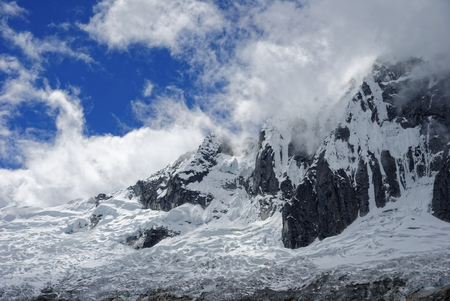Understanding Snow Blindness and Frostbite
When enjoying winter activities in the U.S., whether youre skiing in Colorado, snowshoeing in Vermont, or simply braving a Midwest blizzard, its important to be aware of snow blindness and frostbite—two common but serious cold-weather hazards. Snow blindness, also known as photokeratitis, is essentially a sunburn of the eyes caused by UV rays reflecting off bright snow. Symptoms can include eye pain, redness, blurred vision, and sensitivity to light. On the other hand, frostbite occurs when skin and underlying tissues freeze due to prolonged exposure to extreme cold. It most often affects fingers, toes, nose, ears, cheeks, and chin. Early signs of frostbite include numbness, tingling, or stinging sensations, followed by hard or pale skin that may eventually blister. Both conditions are more likely during outdoor winter sports or activities at high altitudes or in windy weather. Knowing how to recognize these dangers early—and understanding who’s most at risk—can help you protect yourself and your loved ones while making the most of snowy adventures.
2. Recognizing Early Warning Signs
When youre out enjoying the winter weather, its important to know how to spot the first signs of snow blindness and frostbite before they become serious. Catching these warning signs early can help you protect yourself and your loved ones, especially if youre spending time outdoors with kids or friends who arent used to cold climates.
How to Spot Snow Blindness Early
Snow blindness is like getting a sunburn on your eyes, caused by the strong reflection of sunlight off snow. You might not notice it right away, but here are some telltale signs to watch for:
| Early Sign | What It Feels Like | Everyday Example |
|---|---|---|
| Sensitivity to Light | Your eyes hurt in bright light or even indoors. | You find yourself squinting or needing sunglasses more than usual. |
| Tearing or Watery Eyes | Your eyes keep watering uncontrollably. | You have to wipe your eyes often, even when its not windy. |
| Gritty Feeling | It feels like sand is stuck in your eyes. | You keep rubbing your eyes but cant get relief. |
| Blurred Vision | Things look fuzzy or out of focus. | You have trouble reading your phone or seeing street signs clearly. |
How to Notice Frostbite Before Its Serious
Frostbite happens when skin and underlying tissues freeze, usually affecting fingers, toes, ears, nose, and cheeks. Here’s how you can recognize the early warnings:
| Early Sign | What It Looks/Feels Like | Everyday Example |
|---|---|---|
| Numbness or Tingling | You feel pins and needles or can’t feel an area well. | Your fingers feel “asleep” after just a few minutes outside without gloves. |
| Pale or Grayish Skin | The skin turns lighter than usual or has a waxy look. | Your nose looks paler in the mirror compared to the rest of your face. |
| Firm or Waxy Skin Texture | The area feels hard or frozen when you touch it. | Your earlobes feel stiff instead of soft and flexible. |
| Mild Swelling or Redness (when rewarmed) | The skin turns red and puffy once back inside. | Your fingers look swollen after coming in from the cold. |
Quick Tips for Parents and Friends
If youre with kids or anyone new to cold weather, check in with them regularly. Ask if their fingers feel numb, remind them to blink often, and encourage frequent warm-up breaks indoors. Early action makes all the difference!

3. Prevention Tips for Outdoor Activities
Choose the Right Gear for Winter Conditions
When heading out for skiing, snowboarding, hiking, or any popular American winter sport, your choice of gear makes all the difference. Invest in high-quality goggles with UV protection to shield your eyes from intense sunlight reflecting off the snow and prevent snow blindness. For frostbite prevention, select insulated gloves or mittens, warm hats that cover your ears, and thermal socks. Waterproof and windproof outer layers are essential to block moisture and cold winds.
Dress in Layers
Layering is key to staying warm and dry during outdoor winter activities. Start with a moisture-wicking base layer to keep sweat away from your skin. Add an insulating layer like fleece or down, and finish with a breathable, waterproof shell. Make sure your clothing fits comfortably but isn’t too tight—restricted blood flow can increase your risk of frostbite.
Adopt Safe Habits While Outdoors
Plan ahead by checking weather forecasts and avoiding prolonged exposure during extreme cold snaps or blizzards. Take regular breaks indoors or in sheltered areas to allow your body to warm up. Stay hydrated—even in cold weather—and eat energy-boosting snacks to help maintain body heat. Always use sunscreen on exposed skin since sunburn is possible even on cloudy winter days.
Buddy Up for Safety
Whenever possible, enjoy winter sports with a friend or group. This not only makes the experience more fun but also ensures someone can help if you begin to show signs of snow blindness or frostbite. Look out for each other by regularly checking for symptoms like numbness, tingling, or vision changes.
Know When to Call It Quits
If you notice early warning signs—such as white patches on your skin or blurred vision—it’s important to stop what you’re doing and seek shelter immediately. Prioritizing safety over adventure helps ensure you’ll be able to enjoy many more winters outdoors.
4. Immediate Response and First Aid Steps
If you or someone in your group starts showing symptoms of snow blindness or frostbite, acting quickly and safely is crucial—especially in the unpredictable conditions often faced during outdoor adventures in the U.S. Here are practical, step-by-step first aid actions to take right away:
What To Do for Snow Blindness
- Move to a shaded area: Get out of direct sunlight immediately.
- Rest the eyes: Encourage the person to keep their eyes closed as much as possible and avoid rubbing them.
- Use cold compresses: Place a cool, damp cloth over the eyes to relieve discomfort (do not use ice directly).
- Avoid contact lenses: Remove if worn, as they can worsen irritation.
- Seek medical attention: If pain persists or vision worsens after 24 hours, consult a healthcare professional.
First Aid for Frostbite
| Step | Action | Important Notes |
|---|---|---|
| 1. Move to Safety | Get indoors or into a sheltered area away from wind and cold. | Avoid walking on frostbitten feet or toes if possible. |
| 2. Remove Wet Clothing | Gently take off any wet gloves, socks, or boots. | Replace with dry, warm layers if available. |
| 3. Rewarm Affected Areas | Soak the frostbitten areas in warm (not hot) water—ideally 99–104°F (37–40°C) for 15–30 minutes. | Never use direct heat (like a stove or open fire), and don’t rub the skin. |
| 4. Protect Skin | Loosely wrap affected areas with sterile gauze; separate fingers and toes if needed. | Avoid breaking blisters; cover gently if they form. |
| 5. Hydrate & Seek Help | If possible, offer warm fluids (no alcohol). Get professional medical care immediately. |
Simplified Do’s and Don’ts for Quick Reference
- Do: Act fast, keep the person calm, rewarm gradually, remove wet clothing.
- Don’t: Rub the affected skin, use direct heat sources, pop blisters, or give alcohol.
If You’re Out Hiking or Camping in the U.S.
Keen awareness and prompt action can prevent permanent injury. Always carry a basic first aid kit with items like sterile gauze, clean water, sunglasses/goggles, and extra dry clothing when heading into snowy or icy environments. And remember: When in doubt, prioritize getting professional help as soon as possible for both snow blindness and frostbite cases.
5. When to Seek Professional Help
Recognizing when to seek medical help is crucial if you or someone in your group experiences symptoms of snow blindness or frostbite. In the U.S., it’s important to take any sign of vision loss, severe eye pain, blistering skin, numbness that doesn’t resolve with warming, or skin discoloration (such as white, blue, or black areas) seriously. If these symptoms occur, don’t delay—seek professional care immediately. For non-life-threatening situations, visit an urgent care center or emergency room; for emergencies where someone is unconscious, not breathing, or showing signs of severe hypothermia, call 911 right away.
How to Find Medical Attention
If you’re in a snowy area and need help, use your smartphone’s GPS to locate the nearest hospital or clinic by searching “urgent care near me” or “hospital near me.” Many rural and mountain regions have specialized ski patrols or search and rescue teams—don’t hesitate to flag them down or call their posted emergency numbers. Most U.S. national parks and ski resorts also have first aid stations on-site.
Emergency Resources to Remember
- 911: For life-threatening emergencies everywhere in the U.S.
- National Park Rangers: Use park maps for ranger station locations and emergency phones.
- Ski Patrol: Available at all major ski resorts—look for red jackets with a white cross.
- Poison Control (1-800-222-1222): For questions about frostbite treatments or accidental ingestion of substances during emergencies.
Your Safety Comes First
If you’re ever unsure about the severity of your symptoms—or those of someone else—it’s always safer to err on the side of caution and seek expert evaluation. Early intervention can make a significant difference in preventing long-term damage from both snow blindness and frostbite.


